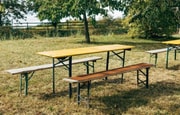Shrinkflation: What Is It and How Can We Fight Back?
- Replies 21
Do you ever feel like your groceries just don't seem to last as long as they used to? You're not imagining things, there's a name for this sneaky supermarket tactic, and it's called 'shrinkflation'.
It refers to the sleazy and underhanded practice of manufacturers and supermarkets of cutting down the size or amount of items while keeping the same price.
This means that you, the consumer, will be spending the same amount of money, but you're getting less in return.
But what is the cause of shrinkflation and how does it work?
As a result of the higher commodities prices, manufacturers are struggling to sell goods at the same price as before while overhead costs. Many fear that they won't be able to afford to stay in business if they jack up their prices; they instead compromise by deliberately reducing the size of each item.
Chris Kohler, a finance reporter for 9News, said: 'It's hard to get angry at the companies themselves for this because the price of raw commodities that go into food has been going up with everything else as inflation does.'
'Wheat, dairy, cocoa, it's all been going up, and the companies have a choice: do we jack up the price or do we make the items smaller? Some have both been getting smaller and been going up in price.'
While it may seem like the practice only affects your grocery items, shrinkflation can and does occur in a variety of other products.
Several Aussies have complained that the portions at their favourite restaurants and cafes have gotten smaller, but the prices have stayed the same (or even increased).
The Australian Bureau of Statistics (ABS) released data in June indicating that this trend was also occurring in the country's real estate market, with the average size of newly authorised properties decreasing by 13 per cent between 2012 and 2021, despite rising property prices.
Products are getting smaller as budgets get tighter and the economy gets worse, but that doesn't mean we can't do anything about it! Here are some ways you can fight back against shrinkflation:
Pay attention to the net weight and count
Recognising the signs of shrinkflation is the first step in avoiding this inflationary trap. When making a purchase, pay close attention to the product's net weight or the net count. For example, you can check the ounces indicated on the packaging for apple juice or the number of sheets for toilet paper.
According to consumer advocate and Consumer World founder Edgar Dworsky, who has studied shrinkflation for more than three decades: 'Ignore the size name and look at the size number, then compare that with what you have at home and bought last time.'
Best deal wins
We know that quality is hard to find and that being loyal to a certain brand helps, but when times are tough, loyalty may not pay off.
According to experts, it's better to choose the least expensive choice available, especially if a similar product from a competitor brand is on sale. Who knows, you might even fall in love with the more affordable option, and decide to switch for good!

Embrace generic brands
Although generics have had a bad rap in the past, today's store brands are sometimes just as good as the name brands and cost much less. Almost every grocery store and department store carries its own label products, and these store brands can save you anywhere from 20 to 25 per cent.
Buy in bulk (but not always)
Buying in bulk is a good strategy for combating shrinkflation. When you buy something in large quantities, you often spend less for each individual unit. These savings could be as little as a few cents or as much as a few dollars, but over time, they can really add up.
But not everyone can save money this way, and you shouldn't do it every time you shop. More money needs to be spent upfront, and then the supplies, like bottles of water or canned goods, might be quite heavy to transport.
Also, be sure you'll use the items you buy; otherwise, you'll have wasted money on things that will soon expire or be thrown away.
Cook and plan your own meals
By making your own meals, you'll have complete control over the ingredients, the cooking time, and the portion size. You can also cut down your food expenses by cooking in bulk and freezing whatever you don't need right away.
In addition to cooking at home, you could also cut down on your grocery expenses by planning your meals ahead of time. Knowing exactly what you'll be cooking will help you to avoid impulse purchases and save some money on your upcoming grocery bill.
Reduce your meat and seafood intake
Meat and seafood can be two of your biggest expenses at the supermarket. Depending on how your family splits their grocery bill, you may want to reduce your intake of these foods to reduce your grocery bill.
So there you have it, members! While it's true that prices are going up almost everywhere, there is one last thing we can do about shrinkflation: raise awareness about it among our friends and loved ones.
The more people who are aware of the problem of shrinkflation, the more pressure there will be on supermarkets and food companies to hopefully change their ways. So make sure you spread the word and let people know what's going on!
We hope these tips prove useful; if you can think of any others, please let us know in the comments section.
It refers to the sleazy and underhanded practice of manufacturers and supermarkets of cutting down the size or amount of items while keeping the same price.
This means that you, the consumer, will be spending the same amount of money, but you're getting less in return.
But what is the cause of shrinkflation and how does it work?
As a result of the higher commodities prices, manufacturers are struggling to sell goods at the same price as before while overhead costs. Many fear that they won't be able to afford to stay in business if they jack up their prices; they instead compromise by deliberately reducing the size of each item.
Chris Kohler, a finance reporter for 9News, said: 'It's hard to get angry at the companies themselves for this because the price of raw commodities that go into food has been going up with everything else as inflation does.'
'Wheat, dairy, cocoa, it's all been going up, and the companies have a choice: do we jack up the price or do we make the items smaller? Some have both been getting smaller and been going up in price.'
While it may seem like the practice only affects your grocery items, shrinkflation can and does occur in a variety of other products.
Several Aussies have complained that the portions at their favourite restaurants and cafes have gotten smaller, but the prices have stayed the same (or even increased).
The Australian Bureau of Statistics (ABS) released data in June indicating that this trend was also occurring in the country's real estate market, with the average size of newly authorised properties decreasing by 13 per cent between 2012 and 2021, despite rising property prices.
Products are getting smaller as budgets get tighter and the economy gets worse, but that doesn't mean we can't do anything about it! Here are some ways you can fight back against shrinkflation:
Pay attention to the net weight and count
Recognising the signs of shrinkflation is the first step in avoiding this inflationary trap. When making a purchase, pay close attention to the product's net weight or the net count. For example, you can check the ounces indicated on the packaging for apple juice or the number of sheets for toilet paper.
According to consumer advocate and Consumer World founder Edgar Dworsky, who has studied shrinkflation for more than three decades: 'Ignore the size name and look at the size number, then compare that with what you have at home and bought last time.'
Best deal wins
We know that quality is hard to find and that being loyal to a certain brand helps, but when times are tough, loyalty may not pay off.
According to experts, it's better to choose the least expensive choice available, especially if a similar product from a competitor brand is on sale. Who knows, you might even fall in love with the more affordable option, and decide to switch for good!

Buying store brands instead of name brands is a great way to save money while shopping. Credit: Pexels/Gustavo Fring.
Embrace generic brands
Although generics have had a bad rap in the past, today's store brands are sometimes just as good as the name brands and cost much less. Almost every grocery store and department store carries its own label products, and these store brands can save you anywhere from 20 to 25 per cent.
Buy in bulk (but not always)
Buying in bulk is a good strategy for combating shrinkflation. When you buy something in large quantities, you often spend less for each individual unit. These savings could be as little as a few cents or as much as a few dollars, but over time, they can really add up.
But not everyone can save money this way, and you shouldn't do it every time you shop. More money needs to be spent upfront, and then the supplies, like bottles of water or canned goods, might be quite heavy to transport.
Also, be sure you'll use the items you buy; otherwise, you'll have wasted money on things that will soon expire or be thrown away.
Cook and plan your own meals
By making your own meals, you'll have complete control over the ingredients, the cooking time, and the portion size. You can also cut down your food expenses by cooking in bulk and freezing whatever you don't need right away.
In addition to cooking at home, you could also cut down on your grocery expenses by planning your meals ahead of time. Knowing exactly what you'll be cooking will help you to avoid impulse purchases and save some money on your upcoming grocery bill.
Reduce your meat and seafood intake
Meat and seafood can be two of your biggest expenses at the supermarket. Depending on how your family splits their grocery bill, you may want to reduce your intake of these foods to reduce your grocery bill.
So there you have it, members! While it's true that prices are going up almost everywhere, there is one last thing we can do about shrinkflation: raise awareness about it among our friends and loved ones.
The more people who are aware of the problem of shrinkflation, the more pressure there will be on supermarkets and food companies to hopefully change their ways. So make sure you spread the word and let people know what's going on!
We hope these tips prove useful; if you can think of any others, please let us know in the comments section.









